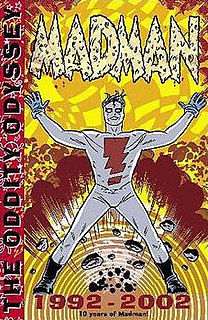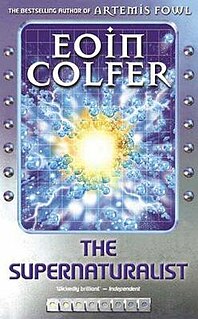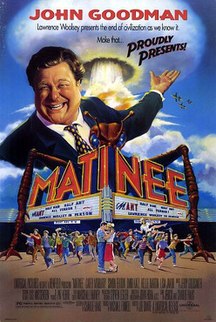Plot summary
Willie Hunsucker is a veteran on the dole, taking a monthly trip to Roanoke so the government can use his brain power for whatever purposes it deems appropriate. Willie is starting to remember bits and pieces of this time. He has an unusually large praying mantis that soothes him when he flashes back to his war service. He doesn't know it but the mantis's pheromes are increasing his memories and his initiative.
Dorcas Rae is a gene technician and mistress to the lab supervisor. On the sly, she created the mantises that have become so popular with people on the dole. The government wants to find who did this. She has also created a wasp that will sting when it senses aggressiveness in people.
Allison is an eco-terrorist. She delivers a car to an oil refinery but her contact doesn't arrive. Just after she's captured by government agents, the car explodes a nuclear device that damages much of the oil refining capacity of the southern U.S. She agrees to cooperate and become an undercover agent—donating brain time to help with Dorca's research.
After Willie's house is robbed, he falls in with a group of people who've each suffered from environmental or nanotechnological damage. As a result of an assignment he'd had while on the dole, they become aware of Allison and Dorcas and determine to rescue Dorcas from the government net that's about to close around her. The chase is on. In a world where nanotechnology can alter one's appearance in a few hours and brain images can be tracked if one uses the net to ask for any information, the chase is an intriguing combination of high and low tech.

Foundation and Earth is a science fiction novel by American writer Isaac Asimov, the fifth novel of the Foundation series and chronologically the last in the series. It was published in 1986, four years after the first sequel to the Foundation trilogy, which is titled Foundation's Edge.

Boris and Natasha: The Movie is a 1992 American made-for-television comedy film that was loosely based on the animated television series The Rocky and Bullwinkle Show. It was shot in Los Angeles. The main actors, Dave Thomas and Sally Kellerman, did not attempt to copy the accents of their animated characters. Although Rocky and Bullwinkle do not appear in this film, two minor characters are revealed to be known also as "Agents Moose and Squirrel" during a climactic scene. This was due to the production company's inability to secure the rights to the animated characters' likenesses for this film. Originally intended for a theatrical release, this film was produced by Management Company Entertainment Group for Showtime Networks, and aired on Showtime on April 17, 1992.

Madman is a creator owned fictional superhero that appears in comic books by creator Mike Allred and which has been published by a number of publishers over the years. The character first appeared in Creatures of the Id #1. His name, Frank Einstein, is a combination of Frank Sinatra and Albert Einstein, and is also a reference to Frankenstein.
Orbit was a series of anthologies of new science fiction edited by Damon Knight, often featuring work by such writers as Gene Wolfe, Joanna Russ, R. A. Lafferty, and Kate Wilhelm. The anthologies tended toward the avant-garde edge of science fiction, but by no means exclusively; occasionally the volumes featured nonfiction critical writing or humorous anecdotes by Knight. Inspired by Frederik Pohl's Star Science Fiction series, and in its turn an influence on other original speculative fiction anthologies, it ran for over a decade and twenty-one volumes, not including a 1975 "Best of" collection selected from the first ten volumes.

The Supernaturalist is a science fiction cyberpunk novel by Irish author Eoin Colfer. The book was influenced by film noir and other predecessors of the cyberpunk science fiction movement. Colfer has outlined plans for a sequel, The Supernaturalist 2.

The Book of the New Sun (1980–1983) is a four volume, science fantasy novel written by the American author Gene Wolfe. It inaugurated the "Solar Cycle" that Wolfe continued by setting other works in the same universe.

Man with the Screaming Brain is a 2005 science fiction/slapstick film co-written, produced, directed, and starring Bruce Campbell. It is Campbell's feature film directorial debut. The film was co-written by David Goodman and co-stars Ted Raimi.

The Claw of the Conciliator is a science fantasy novel by American writer Gene Wolfe, first released in 1981. It is the second volume in the four-volume series The Book of the New Sun.
The use of nanotechnology in fiction has attracted scholarly attention. The first use of the distinguishing concepts of nanotechnology was "There's Plenty of Room at the Bottom", a talk given by physicist Richard Feynman in 1959. K. Eric Drexler's 1986 book Engines of Creation introduced the general public to the concept of nanotechnology. Since then, nanotechnology has been used frequently in a diverse range of fiction, often as a justification for unusual or far-fetched occurrences featured in speculative fiction.
Severian is the narrator and main character of Gene Wolfe's four-volume science fiction series The Book of the New Sun, as well as its sequel, The Urth of the New Sun. He is a Journeyman of the Seekers for Truth and Penitence who is exiled after showing mercy to one of his clients.

Emerging technologies are technologies whose development, practical applications, or both are still largely unrealized, such that they are figuratively emerging into prominence from a background of nonexistence or obscurity. These technologies are generally new but also include older technologies. Emerging technologies are often perceived as capable of changing the status quo.

Matinee is a 1993 American period comedy film directed by Joe Dante. It is about a William Castle-type independent filmmaker, with the American home front during the Cuban Missile Crisis as a backdrop. The film stars John Goodman, Cathy Moriarty, Simon Fenton, Omri Katz, Lisa Jakub, Robert Picardo, Kellie Martin, and Jesse White. It was written by Jerico Stone and Charles S. Haas, the latter portraying Mr. Elroy, a schoolteacher.

The term insectoid denotes any creature or object that shares a similar body or traits with common earth insects and arachnids. It has use in technology, ufology, and other media.

Beast Wars II: Super Life-Form Transformers is a 1998 Japanese Transformers anime series, spawning a movie and a toyline. It was broadcast on TV Tokyo from April 1998 to January 1999, and was the first Transformers anime to be produced by Nihon Ad Systems and animated by the studio Ashi Productions. The series was preceded by Beast Wars: Transformers, and was followed by Super Life-Form Transformers: Beast Wars Neo. The series has a much lighter tone and is aimed more toward children, whereas the more accessible Beast Wars was intended for a wider age-range. The anime uses conventional animation rather than the CGI of its predecessor. With the exception of the faction leaders, all of the characters within the toy-line are either remolds, reissues, or recolors of earlier Beast Wars or Generation 2/Machine Wars toys.
Nanotechnology is impacting the field of consumer goods, several products that incorporate nanomaterials are already in a variety of items; many of which people do not even realize contain nanoparticles, products with novel functions ranging from easy-to-clean to scratch-resistant. Examples of that car bumpers are made lighter, clothing is more stain repellant, sunscreen is more radiation resistant, synthetic bones are stronger, cell phone screens are lighter weight, glass packaging for drinks leads to a longer shelf-life, and balls for various sports are made more durable. Using nanotech, in the mid-term modern textiles will become "smart", through embedded "wearable electronics", such novel products have also a promising potential especially in the field of cosmetics, and has numerous potential applications in heavy industry. Nanotechnology is predicted to be a main driver of technology and business in this century and holds the promise of higher performance materials, intelligent systems and new production methods with significant impact for all aspects of society.
Path of Destruction is a 2005 made-for-TV Sci-Fi Channel original film. It concerns a nanotechnology experiment gone awry.

Brain Wave is a science fiction novel by American writer Poul Anderson, first published in serial form in Space Science Fiction in 1953, and then as a novel in 1954. Anderson had said that he could consider it one of his top five books. This is one of many science fiction works written at this time on the theme of heightened intelligence.
Green nanotechnology refers to the use of nanotechnology to enhance the environmental sustainability of processes producing negative externalities. It also refers to the use of the products of nanotechnology to enhance sustainability. It includes making green nano-products and using nano-products in support of sustainability.

Doraemon: The Records of Nobita, Spaceblazer is a 1981 Japanese animated science fiction neo-western film based on the second volume of the same name of the Doraemon Long Stories series. The film was released in the theatres of Japan on 14 March 1981. It is the 2nd Doraemon film. In 2009, the film was remade as Doraemon: The Record of Nobita's Spaceblazer.

Gone is a bestselling book series written by Michael Grant.














